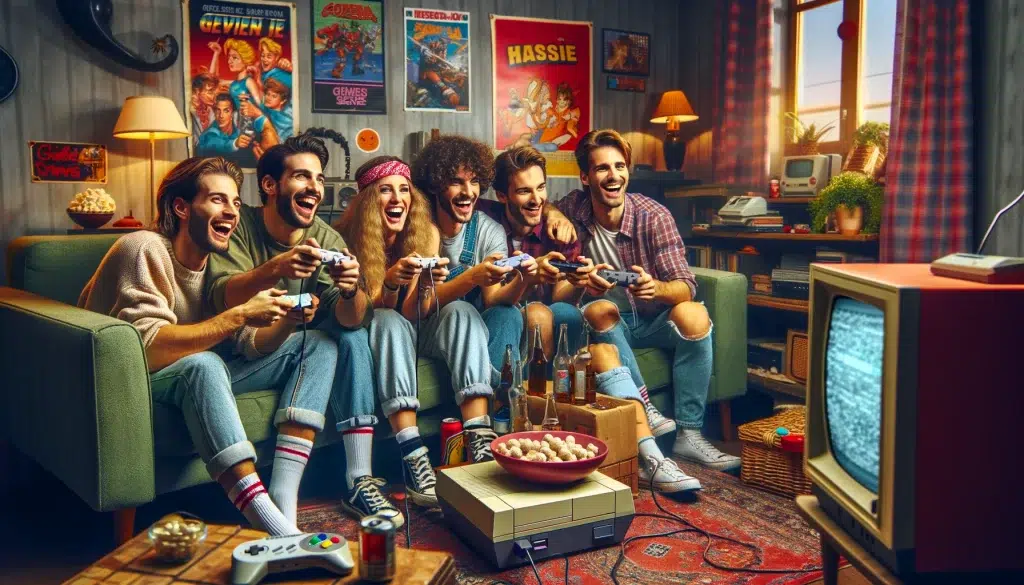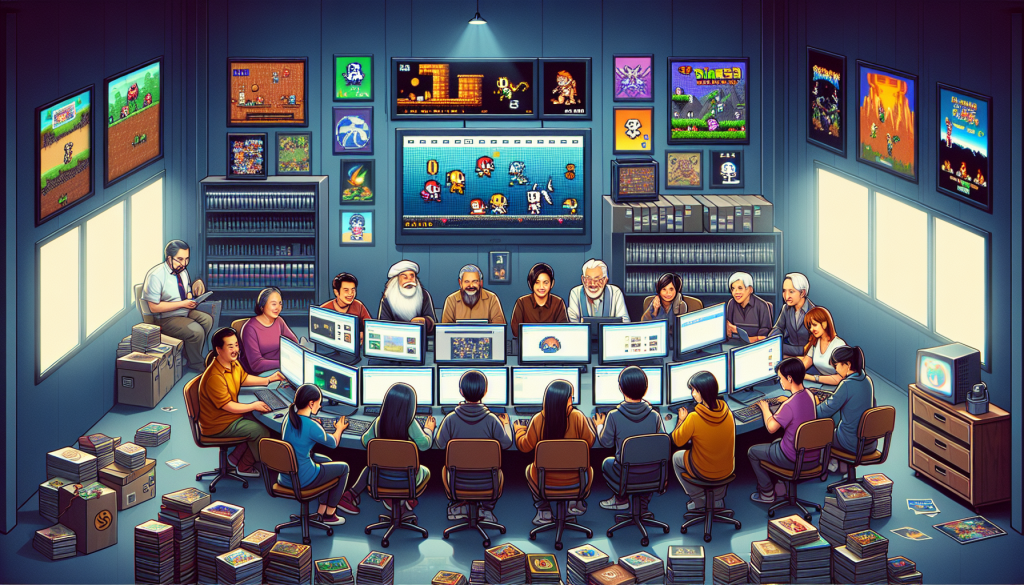Understanding the Phenomenon of Character Attachment in Gaming
Ever found yourself deeply engrossed in a video game, to the point where you feel a profound connection with the digital characters? If you answered “yes”, then you’re not alone. This phenomenon, known as character attachment in gaming, is a fascinating aspect of the player-game interaction that warrants closer exploration.
Defining Character Attachment
Character attachment refers to the emotional bond that players develop towards their characters in video games. It’s the feeling of understanding, empathy, and identification that a player experiences which transcends the typical player-avatar relationship. It’s not just about controlling a character; it’s about experiencing their journey, sharing their victories, and feeling their losses.
The Role of Immersion
One of the key elements contributing to character attachment is immersion. Immersion is the player’s sense of being “in” the game world, experiencing its events as if they were real. The more immersive a game is, the easier it is for players to form emotional bonds with their characters.
- Visual Immersion: The game’s graphics and design play a crucial role in creating a believable game world. Visual details can make characters appear more lifelike, prompting players to form stronger emotional bonds with them.
- Story Immersion: The game’s narrative can also heighten immersion. A well-told story can draw players in, making them feel like they’re a part of the game’s events rather than just observers.
The Influence of Player’s Personalities
It’s also worth noting that different players may form attachments to game characters for different reasons. Some players may resonate with a character because they see aspects of their own personality reflected in them. Others may form connections with characters who embody qualities they admire or aspire to have.
Ultimately, character attachment in gaming isn’t a one-size-fits-all phenomenon. It’s a complex, multi-faceted experience shaped by a myriad of factors, from the game’s design and narrative to the player’s individual personality and preferences. But one thing’s for sure: when a game manages to foster deep character attachment, it can transform the gaming experience from a simple pastime into a deeply emotional journey.
Psychological Factors influencing Player-Character Bonding
In the world of video games, forming an emotional bond with a character is not uncommon. Whether it’s cheering for Mario in his relentless pursuit of Princess Peach or empathizing with Ellie’s survival struggles in The Last of Us, players often develop a connection with characters they engage with. But what are the psychological factors that influence this player-character bonding? Let’s dive in and unravel this thrilling aspect of gaming.
Empathy and Identification
A core element of player-character bonding is empathy. When gamers start to empathize with the characters, they are much more likely to form a deeper bond. Empathy enables players to understand and feel the character’s experiences, making the gameplay more immersive. Moreover, players often identify with the characters that reflect their own traits, aspirations, or experiences. This sense of identification makes the character feel more real and relatable, strengthening the emotional connection.
Agency and Control
Another significant factor that influences the bond is the perceived control or agency that players have over the characters. The more control gamers have, the more they feel invested in the character’s story. It’s like being an author of your own story where every decision you make shapes the character’s journey. This sense of agency fosters a deep connection between the player and the character.
Engaging Challenges and Rewards
The nature of challenges and the reward system in the game also play a crucial role. Overcoming obstacles with the character triggers a sense of accomplishment, and receiving rewards enhances this feeling. It’s a psychological boost that motivates players to continue playing and bonding with the character.
Consistency and Growth
Lastly, the character’s consistency and growth contribute significantly to player-character bonding. Players appreciate characters with consistent characteristics and behaviors, as it makes them more believable. Furthermore, witnessing a character’s growth or progression throughout the game creates a sense of attachment. Players become emotionally invested in the character’s journey, rooting for their success and empathizing with their failures.
In conclusion, the psychological factors influencing player-character bonding are multifaceted, ranging from empathy and identification to agency, engaging challenges, and character consistency and growth. Understanding these factors not only makes the gaming experience more enriching but also provides insights into the intricate world of game design and storytelling.
The Impact of Character Design and Narrative on Emotional Connection
There’s a reason why we get so attached to our favorite video game characters. It’s no mere coincidence that we find ourselves drawn to these pixelated personas. The secret lies in their character design and the narrative built around them. These two crucial elements have the power to foster an emotional connection, making us feel a deep bond with those fictional characters.
Character Design: More Than Just Looks
The visual appearance of a character is our first point of contact with them. It’s what catches our eye and piques our initial interest. But there’s so much more to character design than just how a character looks. It’s about creating a personality and backstory that players can identify with or feel intrigued by. It’s about creating an image that resonates with audiences, making them want to know more about the character.
- Personality Traits: A character’s personality traits can make them endearing, relatable, or simply curious. Characters with a unique set of qualities can stand out and engage players on a deeper level.
- Backstory: Everyone loves a good story, right? A well-crafted backstory can give a character depth, making them feel real and relatable. It can also make players invested in the character’s journey.
Narrative: The Power of Storytelling
Ever wondered why you can’t put down a book until you’ve finished it? Or why you binge-watch an entire season of a TV series in one sitting? The answer lies in the power of storytelling. A compelling narrative can keep players glued to their screens, immersing them in the character’s world. It can evoke strong emotions, making players feel a personal connection with the character.
- Character Development: A dynamic narrative that shows a character’s growth and progress can make players feel invested in their journey. This emotional investment can strengthen the player-character bond.
- Conflict and Resolution: Every good story has conflicts that the characters must overcome. These struggles and their eventual resolution can stir up emotions, making players feel more connected to the character.
- Interactive Storytelling: Video games offer an interactive medium where players can influence the narrative. This direct involvement can create a stronger emotional bond between the player and the character.
When combined, character design and narrative can work wonders to create a powerful emotional connection between player and character. They can make players care about the characters, their struggles, and their journey, fostering a deep bond that goes beyond the screen.
Case Studies: Examining Players’ Deep Connection with Iconic Game Characters
Let’s delve into the fascinating world of gaming and explore how players form emotional attachments to their virtual companions. We’ll be examining some iconic game characters who have left a lasting impact on players, shaping their gaming experiences and often, even their lives.
Commander Shepard: Mass Effect
Few characters have epitomized the player-character emotional bond quite like Commander Shepard from the Mass Effect series. This connection was catalyzed by the game’s powerful narrative, which allowed players to be involved in shaping Shepard’s decisions and relationships. It was this sense of agency and influence over the character’s actions that really made players invest emotionally in Shepard’s story.
Joel and Ellie: The Last of Us
Another prime example of emotional attachment is the bond between players and the characters Joel and Ellie in The Last of Us. Guiding these two characters through a post-apocalyptic world, full of danger and uncertainty, players grew to not only care for them but to deeply understand their struggles and fears.
Ellie’s youthful innocence juxtaposed with Joel’s grizzled resilience made for a compelling narrative, drawing players in and creating a bond between them and the characters. It’s not uncommon for players to shed tears and experience real emotions when playing this game, showcasing the strength of the player-character connection.
Clementine: The Walking Dead
When discussing character attachment in gaming, one can’t ignore Clementine from The Walking Dead. The game’s episodic structure allowed players to grow with Clementine, witnessing her evolution from a scared little girl to a tough survivor.
Players were tasked with making tough, moral choices on her behalf, further strengthening the emotional bond. This investment in Clementine’s story resulted in an experience where players felt a genuine responsibility and care for her.
Link: The Legend of Zelda
Last but certainly not least, we have Link from The Legend of Zelda. Despite being a silent protagonist, Link’s courageous adventures and relentless pursuit of justice resonated with players. The fantasy setting of Hyrule and Link’s continuous fight against evil captivated players, leading to a strong emotional attachment.
In conclusion, the emotional connection between players and game characters can significantly shape the gaming experience. These case studies illustrate how character design, narrative, and player agency can evoke deep feelings and create memorable gaming experiences.












